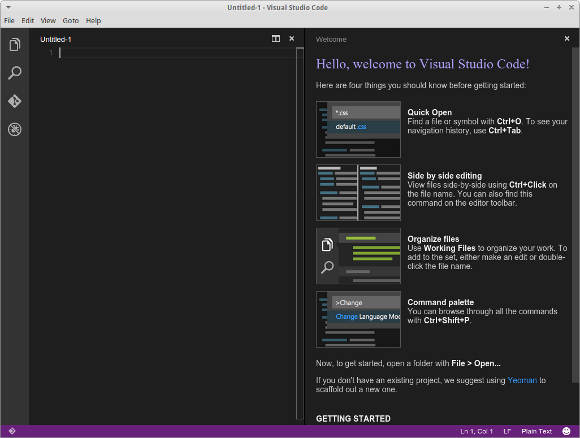

userland - An eminently-approachable book on the command-line written by an old SparkFun alumnus.There are tons of great resources that can help familiarize you with these tools. If you're not familiar with using a terminal or invoking command-line tools like make, we'd recommend learning a bit about those first. We'll try to step through, as much as possible, how the VS Code/Arduino CLI pair can be used to develop an Arduino library, but a lot of what we'll cover can be adapted to new Arduino core development or even simple Arduino sketch-writing.

#How to run visual studio code how to
This tutorial will demonstrate how to use a VS Code to build for and program an Arduino - all without ever opening the comfortable-yet-restricting Arduino IDE. Arduino CLI provides us a command line interface that can be passed to tools like make or a shell via the IDE. Downloading new board definition files.Īrduino CLI is the "glue" we'll use to pair the VS Code IDE with common Arduino compilation and upload tools.The Arduino CLI provides a command-line interface for such tasks as:

We're not shilling for VS Code in this tutorial but it may be hard, at times, to hide our admiration for the well-done editing tool.Īlso critical to this tutorial is Arduino's recently (pre-)released Arduino CLI. We'll focus on using Microsoft's free, open-source VS Code editor in this tutorial, but a lot of the concepts should translate to other IDE's like Eclipse, Netbeans, or anything else you may prefer. Once you take the time to learn these tools they make programming in C/C++ (or any language, really) so much more efficient. This tool allows you to run "make", "grep", or any of your favorite terminal commands without ever swapping windows.
#How to run visual studio code windows


 0 kommentar(er)
0 kommentar(er)
